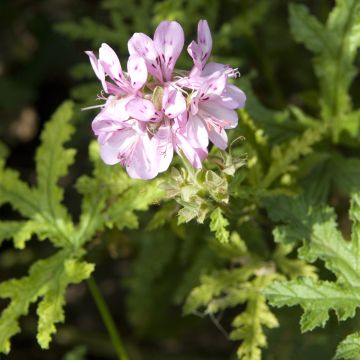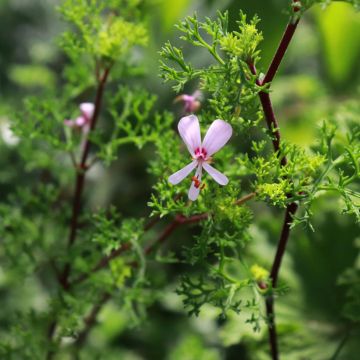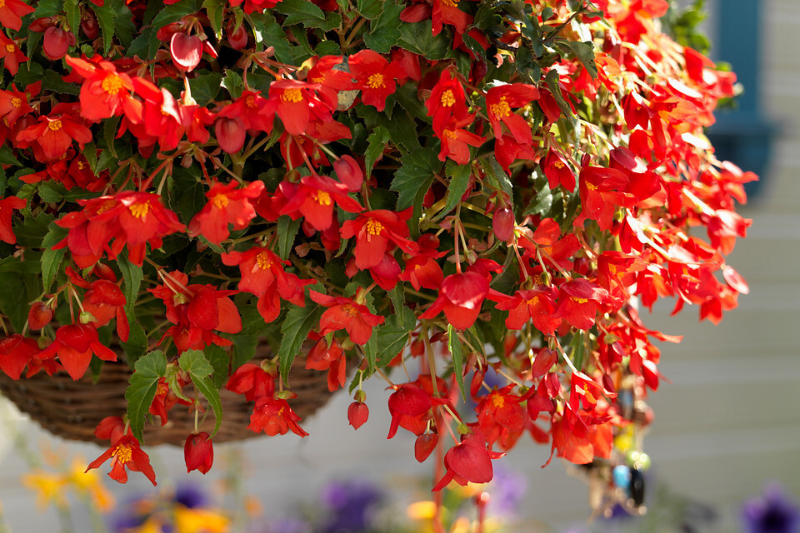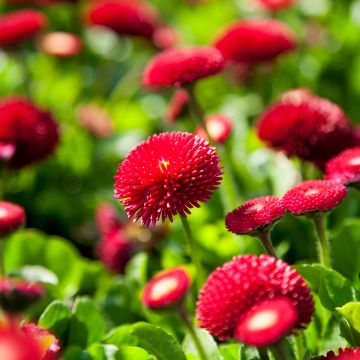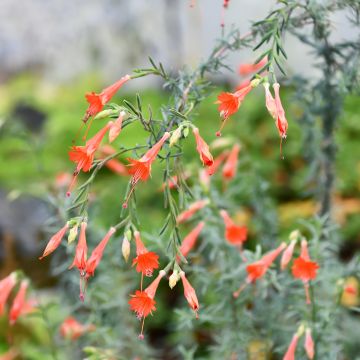

Glaucium flavum


Glaucium flavum


Glaucium flavum


Glaucium flavum


Glaucium flavum


Glaucium flavum


Glaucium flavum
Glaucium flavum
Glaucium flavum
Horned poppy
Special offer!
Receive a €20 voucher for any order over €90 (excluding delivery costs, credit notes, and plastic-free options)!
1- Add your favorite plants to your cart.
2- Once you have reached €90, confirm your order (you can even choose the delivery date!).
3- As soon as your order is shipped, you will receive an email containing your voucher code, valid for 3 months (90 days).
Your voucher is unique and can only be used once, for any order with a minimum value of €20, excluding delivery costs.
Can be combined with other current offers, non-divisible and non-refundable.
Home or relay delivery (depending on size and destination)
Schedule delivery date,
and select date in basket
This plant carries a 6 months recovery warranty
More information
We guarantee the quality of our plants for a full growing cycle, and will replace at our expense any plant that fails to recover under normal climatic and planting conditions.
Would this plant suit my garden?
Set up your Plantfit profile →
Description
The Glaucium flavum, also known as the Yellow horned poppy, Horned poppy or Yellow sand poppy, grows wild along coastlines, on the edges of paths, and even on the slopes of spoil heaps, very often on poor and dry soils. Similar to the Glaucium corniculatum, this species is less rare, a little larger and equally decorative with its beautiful frizzy blue foliage and its large flowers in yellow to orange tones. Comfortable in dry, sunny areas, it is a pretty wild plant for rockeries or gravel gardens. Though not a perennial, it self-seeds easily in light soils, wherever suits it best.
The yellow horned poppy belongs to the family of Papaveraceae, like all poppies. This species is native to Western and Southern Europe as well as North Africa, but it has become widely naturalized. It can be found on Mediterranean coasts, in dunes and on beaches, along roads and paths, on the edges of fields or on previously cultivated fallow land, as well as on the coasts of the Atlantic and the English Channel. Very common 50 years ago, this yellow sand poppy is now tending to become scarce. It is a plant that thrives in places generally disturbed by humans. The crown is hardy down to -12°C/10.4°F, and the foliage lasts more or less throughout the winter. Its lifespan is limited, around 3-4 years in the Mediterranean region, but it self-seeds freely. This horned poppy has a taproot that does not like to be disturbed. Its grows rapidly, forming a beautiful tuft about 60 cm (23.6 in) in height and 50 cm (19.7 in) wide in one or two years. It first forms a large rosette of pinnate leaves, each measuring 20 to 30 cm (7.9 to 11.8 in) long. The glaucous, grey, green and blue leaves are fuzzy and divided into numerous and irregular lobes with very wavy edges. The flowering period takes place from March to July. The plant forms branched floral stems with small leaves and the flower buds open into cups that are 6 to 8 cm (2.4 to 3.1 in) wide. Each flower is composed of 4 large delicate, oval petals, usually light yellow but sometimes more orangish. In the centre of the flower, there is a cluster of golden-yellow stamens. The unusual fruits, are arched capsules that are 30 cm (11.8 in) long. When ripe, they snap open and release numerous small black seeds. This allows it to remain in the garden from one year to the next. All parts of the plant are toxic, including the seeds.
Use horned poppies in a gravel garden, rockery, or on a slightly arid slope. The Glaucium flavum creates beautiful natural displays with medium-sized grasses. It is also superb with all cushion-shaped plants and Mediterranean plants such as rockroses, thymes, lavenders, Euphorbia myrsinites, dwarf artemisias, etc. Its radiant corollas form a beautiful contrast with the very blue flowers of perennial flax or wild chicory.
Report an error about the product description
Glaucium flavum in pictures
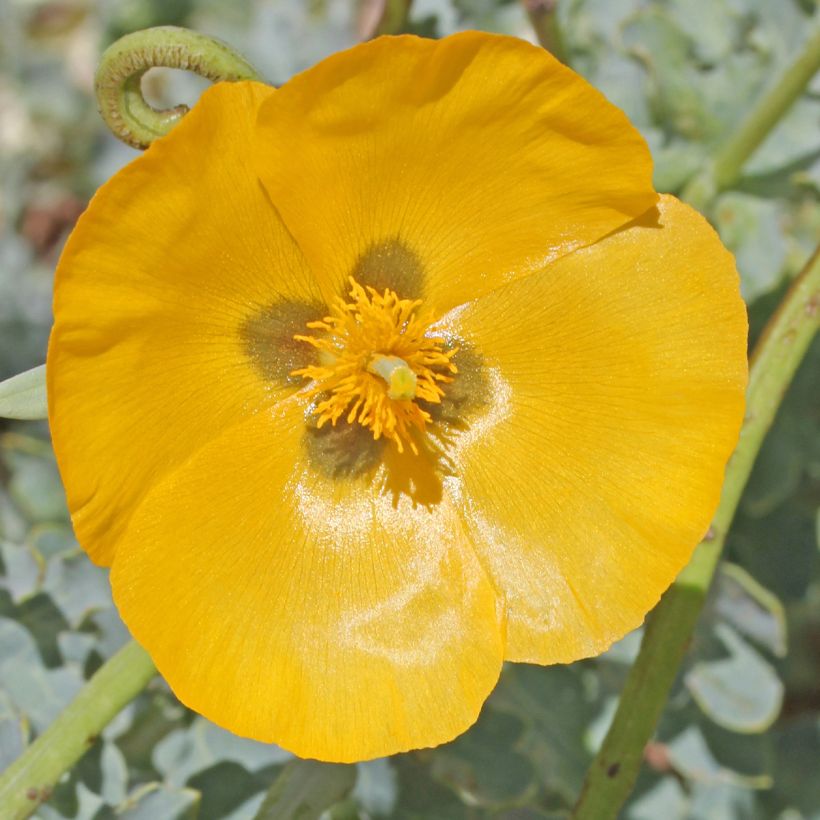



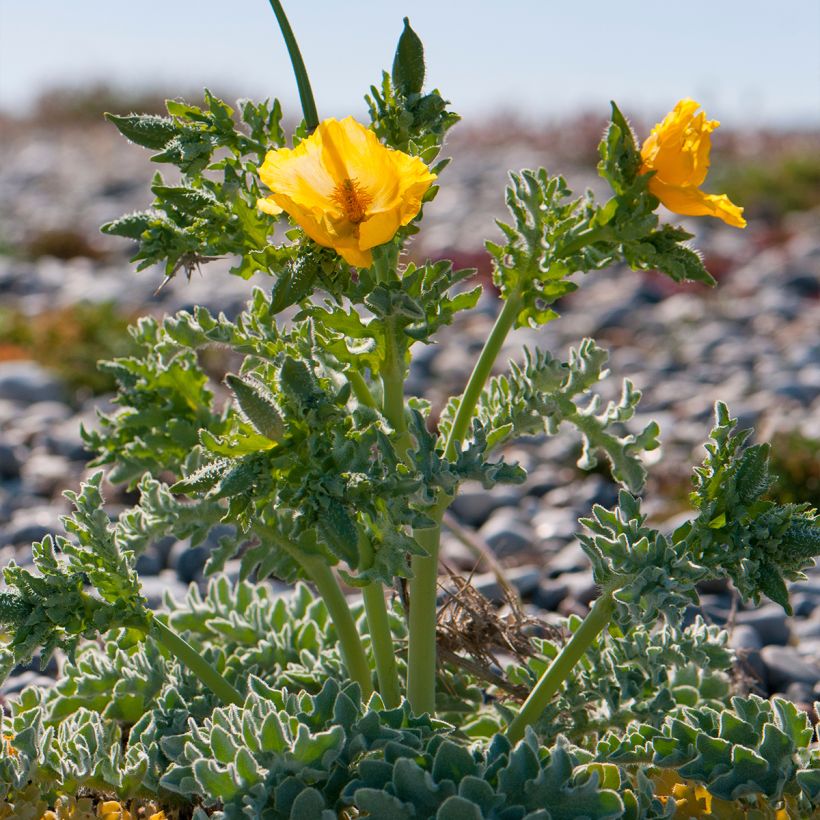

Flowering
Foliage
Plant habit
Botanical data
Glaucium
flavum
Papaveraceae
Horned poppy
Southern Europe
Other Annuals A to Z
View all →Planting and care
Horned poppies are easy to grow in a gravel garden, a large rockery, a sunny slope, in any soil - sandy, stony, rich or poor, chalky or not, dry to moist, always very well drained - where they self-seed abundantly. Choose the location carefully from the start, as the roots do not like to be disturbed. Once well-rooted, the plant can do without watering almost everywhere. It can withstand frost down to about -12 /-14 °C (10.4°F/6.8°F) at the lowest, in soil that does not retain water. It is a short-lived perennial that self-seeds abundantly in garden areas that suit it.
Planting period
Intended location
Care
Planting & care advice
This item has not been reviewed yet - be the first to leave a review about it.
Similar products
Haven't found what you were looking for?
Hardiness is the lowest winter temperature a plant can endure without suffering serious damage or even dying. However, hardiness is affected by location (a sheltered area, such as a patio), protection (winter cover) and soil type (hardiness is improved by well-drained soil).

Photo Sharing Terms & Conditions
In order to encourage gardeners to interact and share their experiences, Promesse de fleurs offers various media enabling content to be uploaded onto its Site - in particular via the ‘Photo sharing’ module.
The User agrees to refrain from:
- Posting any content that is illegal, prejudicial, insulting, racist, inciteful to hatred, revisionist, contrary to public decency, that infringes on privacy or on the privacy rights of third parties, in particular the publicity rights of persons and goods, intellectual property rights, or the right to privacy.
- Submitting content on behalf of a third party;
- Impersonate the identity of a third party and/or publish any personal information about a third party;
In general, the User undertakes to refrain from any unethical behaviour.
All Content (in particular text, comments, files, images, photos, videos, creative works, etc.), which may be subject to property or intellectual property rights, image or other private rights, shall remain the property of the User, subject to the limited rights granted by the terms of the licence granted by Promesse de fleurs as stated below. Users are at liberty to publish or not to publish such Content on the Site, notably via the ‘Photo Sharing’ facility, and accept that this Content shall be made public and freely accessible, notably on the Internet.
Users further acknowledge, undertake to have ,and guarantee that they hold all necessary rights and permissions to publish such material on the Site, in particular with regard to the legislation in force pertaining to any privacy, property, intellectual property, image, or contractual rights, or rights of any other nature. By publishing such Content on the Site, Users acknowledge accepting full liability as publishers of the Content within the meaning of the law, and grant Promesse de fleurs, free of charge, an inclusive, worldwide licence for the said Content for the entire duration of its publication, including all reproduction, representation, up/downloading, displaying, performing, transmission, and storage rights.
Users also grant permission for their name to be linked to the Content and accept that this link may not always be made available.
By engaging in posting material, Users consent to their Content becoming automatically accessible on the Internet, in particular on other sites and/or blogs and/or web pages of the Promesse de fleurs site, including in particular social pages and the Promesse de fleurs catalogue.
Users may secure the removal of entrusted content free of charge by issuing a simple request via our contact form.
The flowering period indicated on our website applies to countries and regions located in USDA zone 8 (France, the United Kingdom, Ireland, the Netherlands, etc.)
It will vary according to where you live:
- In zones 9 to 10 (Italy, Spain, Greece, etc.), flowering will occur about 2 to 4 weeks earlier.
- In zones 6 to 7 (Germany, Poland, Slovenia, and lower mountainous regions), flowering will be delayed by 2 to 3 weeks.
- In zone 5 (Central Europe, Scandinavia), blooming will be delayed by 3 to 5 weeks.
In temperate climates, pruning of spring-flowering shrubs (forsythia, spireas, etc.) should be done just after flowering.
Pruning of summer-flowering shrubs (Indian Lilac, Perovskia, etc.) can be done in winter or spring.
In cold regions as well as with frost-sensitive plants, avoid pruning too early when severe frosts may still occur.
The planting period indicated on our website applies to countries and regions located in USDA zone 8 (France, United Kingdom, Ireland, Netherlands).
It will vary according to where you live:
- In Mediterranean zones (Marseille, Madrid, Milan, etc.), autumn and winter are the best planting periods.
- In continental zones (Strasbourg, Munich, Vienna, etc.), delay planting by 2 to 3 weeks in spring and bring it forward by 2 to 4 weeks in autumn.
- In mountainous regions (the Alps, Pyrenees, Carpathians, etc.), it is best to plant in late spring (May-June) or late summer (August-September).
The harvesting period indicated on our website applies to countries and regions in USDA zone 8 (France, England, Ireland, the Netherlands).
In colder areas (Scandinavia, Poland, Austria...) fruit and vegetable harvests are likely to be delayed by 3-4 weeks.
In warmer areas (Italy, Spain, Greece, etc.), harvesting will probably take place earlier, depending on weather conditions.
The sowing periods indicated on our website apply to countries and regions within USDA Zone 8 (France, UK, Ireland, Netherlands).
In colder areas (Scandinavia, Poland, Austria...), delay any outdoor sowing by 3-4 weeks, or sow under glass.
In warmer climes (Italy, Spain, Greece, etc.), bring outdoor sowing forward by a few weeks.





































